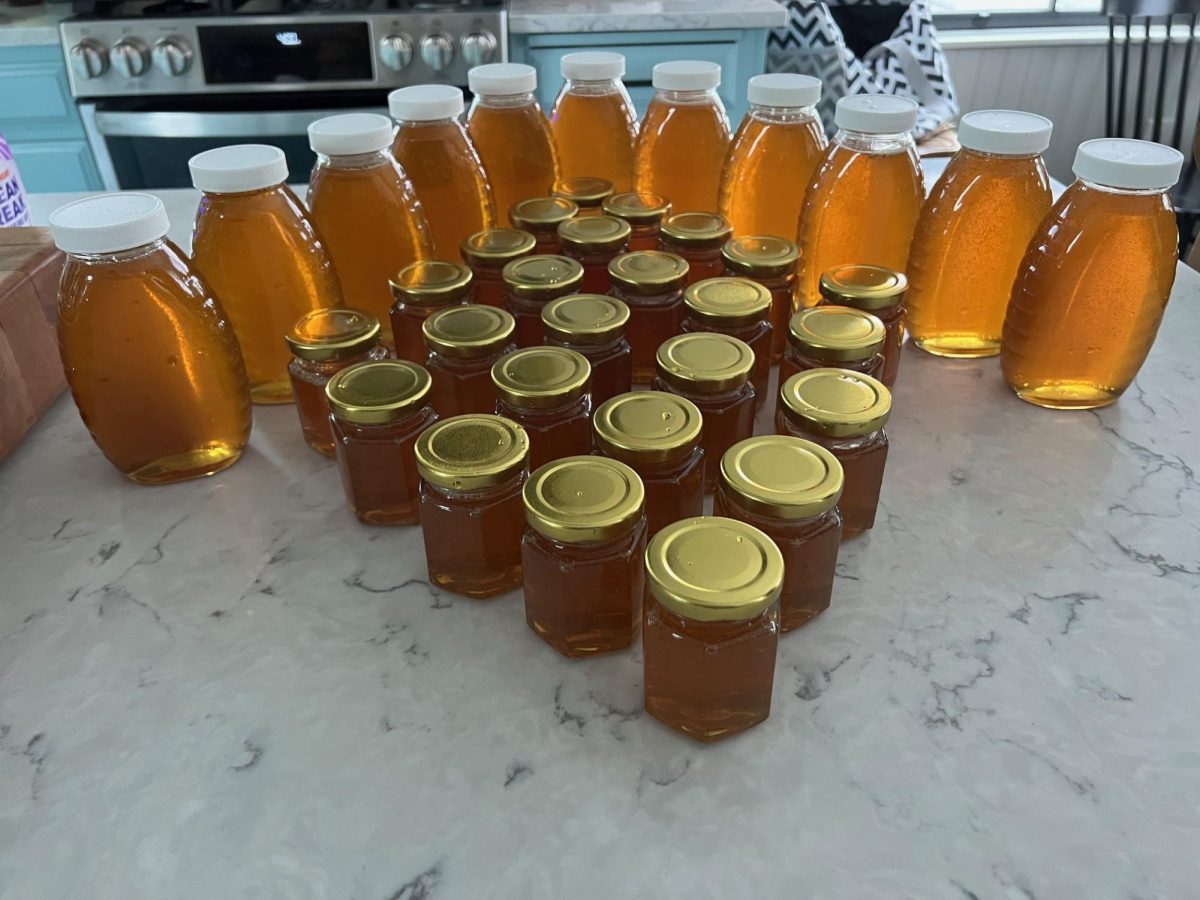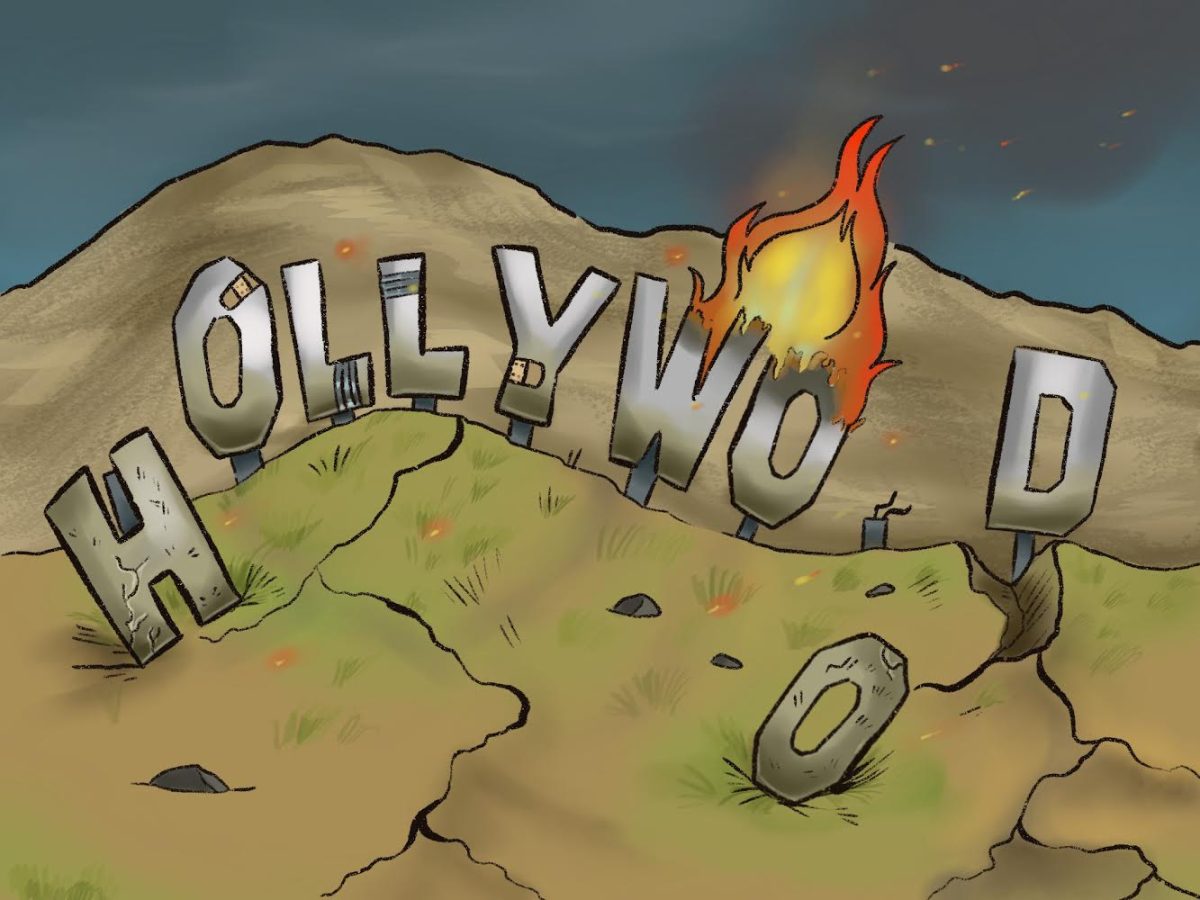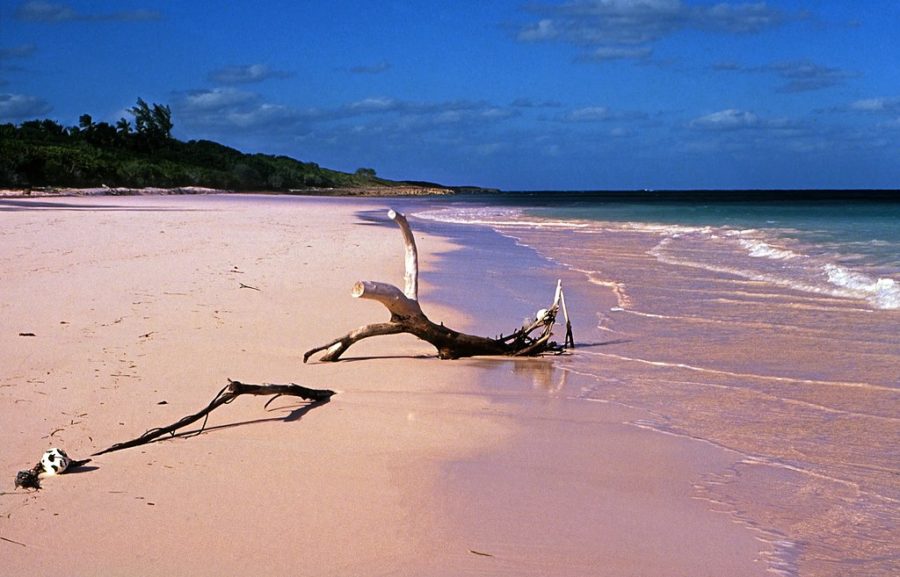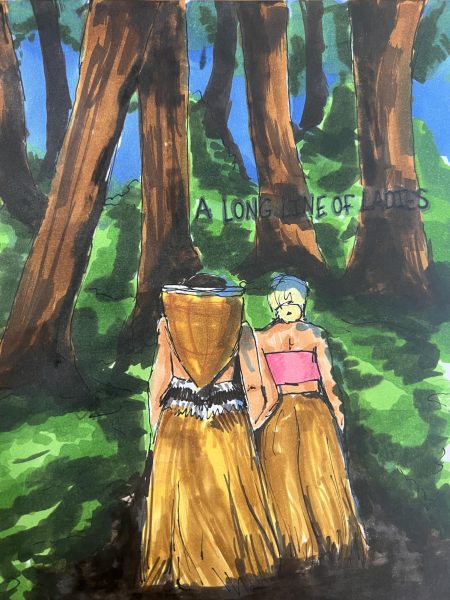The vibrant colors of the coast
The Gillnetter’s Evelyn Porter explains the science behind the world’s most colorful beaches.
Rüdiger Stehn from Kiel, Deutschland, CC BY-SA 2.0
Eleuthera Pink Sand Harbour Island, Bahamas
April 24, 2023
As the weather creeps closer to the warmth and sun of summer beach-days, the dreary gray of spring can feel as though it lasts forever. While looking forward to a beach-filled vacation, one may find momentary interest in other beaches around the world, several of which have interesting colors.
Some sand gets its coloration from finely ground minerals deposited from rivers streams, such as the white sand beaches found along the coasts of Florida, the Caribbean, and the Gulf of Mexico. Many beaches in this area gain their tint from white quartz sediment that has been carried downstream. Because quartz is a non-soluble mineral, it collects along the shore line, adding to the beach over time until the whole beach is of the same pale color.
Beaches of the Bahamas are a unique shade of rosy light pink, and unlike tropical white sand beaches, do not get their color from rocky sediment. Instead, their pigment comes from the crushed shells of a microscopic coral insect, the Foraminifera. These aquatic insects live in nearby coral reefs, and are so common that despite being tiny organisms, the coloring from their bright pink and red shells is enough to turn the coastline a brilliant salmon.
On the eastern coast of Canada, red sand beaches bear a ruddy hue much deeper than that of the pink sand beaches of the Bahamas. The red color comes from the abundance of iron in the stone along the coast. Because the iron is in soft sandstone, the iron is more exposed to the elements, which allows it to oxidize and turn red, unlike the black sand beaches of Hawaii.
In Hawaii, black sand beaches are created from the eroded basalt, andesite, and volcanic glass of volcanic islands. The cooled lava that creates these types of rocks has a rich dark hue due to the high amounts of iron in magma. The small pieces of black rock that make up black sand beaches are most commonly formed in two ways. In some circumstances, sand is eroded from the volcano’s slope from rain, rivers, and streams. From there, it is carried down to the coast where it accumulates into a full beach. In other cases, the small pieces of basalt and volcanic glass are formed when hot lava flows down to the ocean and cools too quickly, causing the material to not just solidify, but also shatter upon impact with the cold water. Depending on the activity of a volcano, this means new black sand beaches can be created with incredible speed.
The rarest type of beach sand in the world, green sand, can be found only in 4 places: Norway, Guam, Hawaii, and Ecuador. For these green sand beaches to exist, a volcanic eruption in which the crystal olivine is brought to the surface has to take place. Olivine is a mineral most commonly found in the upper mantle and subsurface. After an eruption with olivine, the green beaches evolve much like black ones. The sand is formed either by the eroding of volcano mountains or by the shattering of quickly-cooled lava.








































